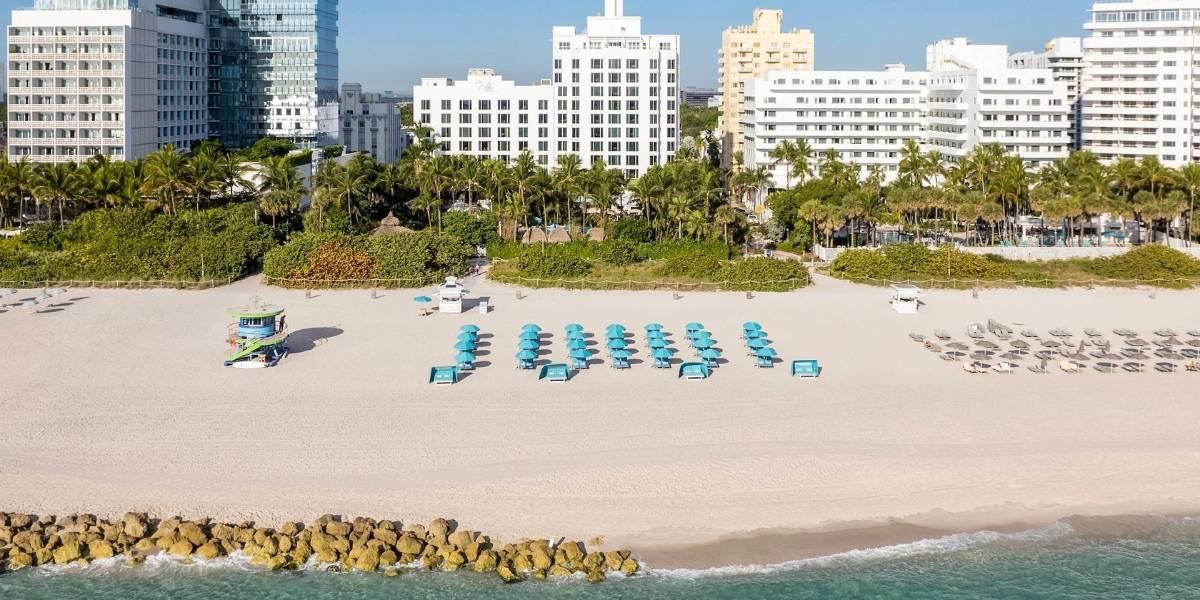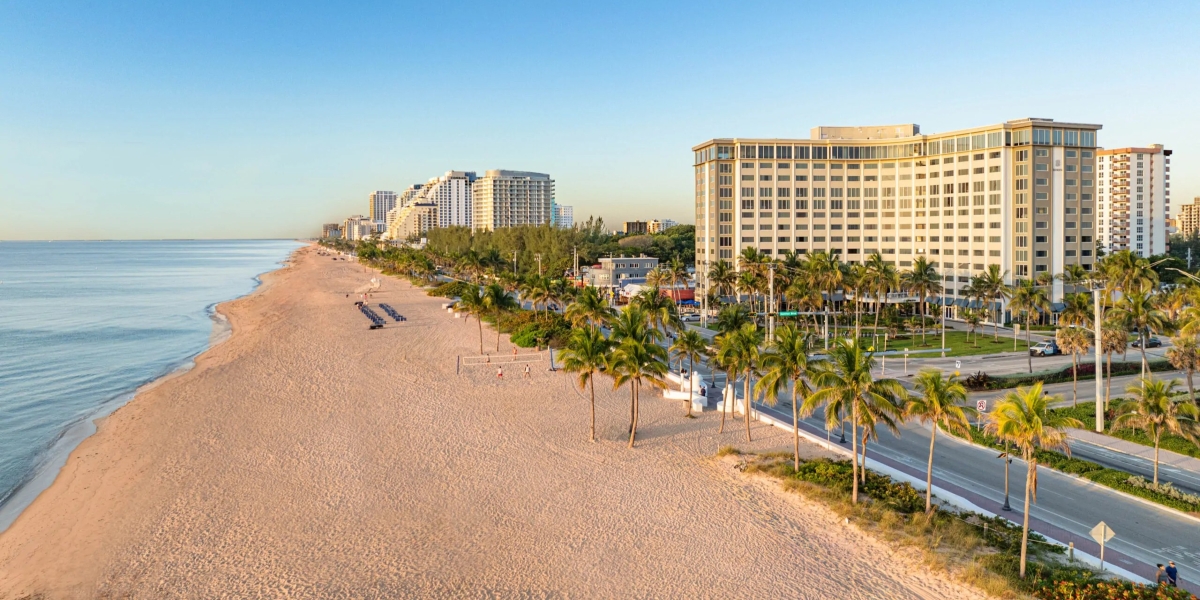Miami. Just hearing the name likely brings to mind images of vibrant nightlife, beautiful beaches, and a dynamic international culture. It’s a city pulsating with energy, a global magnet for tourism and business. Yet, this modern, bustling metropolis has surprisingly humble beginnings. Believe it or not, Miami started out as nothing more than a challenging, often swampy wilderness at the very southern tip of Florida, far from any major population centers. It’s quite a transformation, and telling its story means looking at the specific people and pivotal decisions that led to the founding of Miami and its initial development.
The Untamed Canvas: Miami’s Original Landscape
To truly appreciate Miami’s journey, it helps to understand what the area was like before it became a city. Picture a largely untamed environment, a challenging natural landscape dominated by swampy terrain, dense with mangroves and pine forests. It was characterized by intense heat and humidity, and abundant wildlife thrived there, making it a very difficult place for human settlement. Getting around was tough, and building anything substantial presented significant obstacles.
Even before the modern city began to take shape, this land had ancient roots of human presence. Indigenous groups, most notably the Tequesta tribe, thrived in this challenging environment for centuries. They lived off the land and water, building a culture that adapted to the unique conditions, demonstrating that the land, though wild, could indeed support human life, albeit in a very different way than the city that would come. Beyond the native populations, there were early European attempts at making a home here. Very early forays by Spanish and British explorers and would-be colonists were largely unsuccessful. The harsh conditions and sheer remoteness of the area proved too much for these early adventurers to establish any sustained settlement, underscoring the monumental task of truly establishing a city here.
The Visionaries Who Saw the Future in the Swamp
The dramatic transformation of this wilderness into a burgeoning city largely hinges on the vision and persistence of a few key individuals. One of the most central figures in the founding of Miami is Julia Tuttle, often affectionately called the “Mother of Miami.” She arrived in the area with significant land holdings and an almost singular, unwavering vision for a great city to rise from the challenging wilderness. Her determination to attract the necessary resources for development was relentless, and she truly believed in the potential of this subtropical outpost.
Her persistence paid off, most notably in convincing Henry Flagler, the powerful industrialist and railroad tycoon, to extend his Florida East Coast Railway. Flagler initially hesitated to bring his railway so far south into what seemed like an empty expanse. Legend has it that after a devastating freeze in central Florida ruined orange crops in 1894-95, Tuttle famously sent Flagler a box of perfectly preserved orange blossoms from her Miami property, proving the region’s mild climate. This persuasive gesture, coupled with her offer of substantial land grants, convinced him to take the monumental step of extending the railroad, a decision that would prove absolutely transformative for the founding of Miami, literally putting it on the map. While Tuttle and Flagler were undoubtedly the main drivers, it’s worth noting that other early contributors also played roles in acquiring land, starting initial businesses, or establishing initial communities in the surrounding area, showcasing a collective effort, even if the primary momentum came from these two figures.
Laying the Groundwork: Pivotal Decisions for a New City

With the key players in place, the actual building of early Miami began with a series of crucial decisions that laid the very foundations of the city. The arrival of the iron artery was perhaps the most pivotal moment. Henry Flagler’s railway reaching the Miami River in April 1896 was a game-changer. This was the critical decision that truly opened up the isolated region, bringing in a steady stream of people, essential construction materials, and connecting Miami directly to the rest of Florida and the broader nation. It transformed what was a remote outpost into an accessible settlement.
Following the railroad’s arrival, systematic development took hold. Flagler’s company, among others, began the organized sale of tracts of land, and engineers meticulously planned and platted the streets of the nascent town. This systematic layout showed a deliberate move towards organized urbanism, rather than haphazard growth. An equally important step was the drive for official status. The community understood the benefits of formal organization, and efforts to officially incorporate the city culminated in a famous meeting on July 28, 1896. During this pivotal vote, residents decided to formally establish the City of Miami. It’s also notable that this vote involved a diverse population, including a significant number of African American and Bahamian residents who made up a crucial part of the early workforce, reflecting a varied foundation for the founding of Miami.
Beyond the direct urban development, building beyond tourism was essential in those early days. While Miami would later become world-renowned for its leisure industry, initial economic drivers like agriculture played a vital role. Pineapples and citrus cultivation were important early industries that helped sustain the new settlement and provided early economic stability for early Miami before tourism fully blossomed.
Miami Takes its First Steps and Finds its Identity
With the railroad connecting it to the world and a solid plan for development, Miami was officially born on July 28, 1896. This date marks the moment the name “Miami” officially became a recognized city. What followed was a period of rapid initial boom. The railway continued to bring in more settlers, investors, and materials, leading to an almost immediate surge in population and construction. It was a time of intense, swift growth as the vision started to become a reality for early Miami.
As the population swelled, efforts focused on establishing core services. Basic city infrastructure began to take shape: the first roads were cleared, rudimentary utilities like water and sanitation were put in place, and essential public buildings such as schools and churches were constructed. These developments were critical in making Miami feel like a real, functioning town rather than just a collection of scattered buildings. Perhaps most defining for the city’s future, this period also saw the dawn of tourism. Miami quickly began to capitalize on its unique warm climate and beautiful coastal location. Visitors from colder northern states started to arrive, seeking refuge from harsh winters. This early focus on attracting tourists laid the crucial groundwork for Miami’s enduring identity as a world-renowned vacation destination, a key aspect of the city’s character ever since the founding of Miami.
A Vision Realized Against All Odds
The journey of Miami from a challenging, untamed wilderness to the vibrant, dynamic city it is today is truly a remarkable story of transformation. It highlights how a powerful blend of persistent individual vision, especially from figures like Julia Tuttle, combined with strategic infrastructure investments like Henry Flagler’s railway, and foundational decisions made by its early residents, literally built a city against geographical odds.
Miami’s unique history, born from a mix of sheer human determination and natural advantages, continues to shape its distinct character. The enduring legacy of these early pioneers in the founding of Miami is evident in every bustling street, every towering building, and every sun-drenched beach, showcasing how a bold vision, even for a swamp, can indeed be realized.







